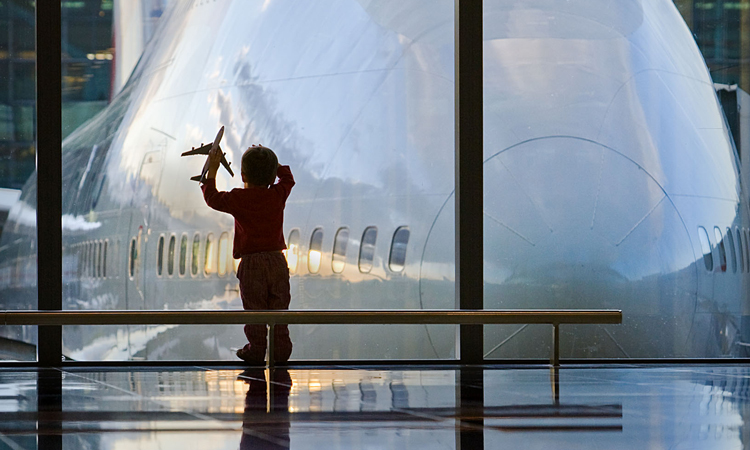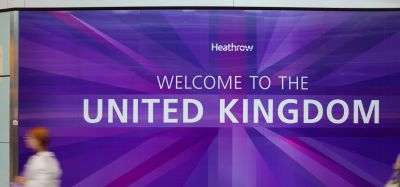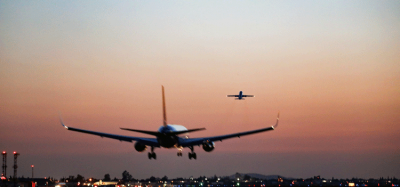Heathrow to remove cap after summer of growth
Posted: 31 October 2022 | International Airport Review | No comments yet
During the summer 2022, London Heathrow Airport served 18 million passengers which is more than any other European hub, and as a result, the airport has decided to remove the cap from 30 October 2022.


London Heathrow Airport (LHR) served 18 million passengers this summer 2022, more than any other European hub, in spite of being hit harder than European rivals during lockdown.
Vast majority of Heathrow passengers had good service this summer. This was achieved by everyone at the airport working together to serve passengers and has been helped by our joint efforts to keep capacity and demand in balance.
Heathrow has decided to remove the cap from 30 October 2022. The airport is working with airlines to agree a highly targeted mechanism that, if needed, would align supply and demand on a small number of peak days in the lead up to Christmas 2022. This would encourage demand into less busy periods, protecting the heavier peaks, and avoiding flight cancellations due to resource pressures.
Join us live: Shaping the Next Generation of Hold Baggage and Air Cargo Screening
Join us live for an insightful webinar on 11th December at 14:00 GMT, in collaboration with Smiths Detection, as we explore the strategic balance of operational efficiency, regulatory compliance, and sustainability in high-volume security environments.
This session offers a focused look into future-proofing your security strategy.
Key learning points
- Cost Reduction: Strategies to minimize bag travel time while simultaneously reducing operational costs.
- Regulatory Roadmap: Insights into the next wave of regulatory changes and their impact on future investment decisions.
- Sustainable Systems: Practical approaches to building sustainability into security systems and lowering the total cost of ownership (TCO).
- Scalable Solutions: Real-world examples of scalable systems supporting current airport growth and preparing for tomorrow.
Register now for expert insights, case studies, and actionable strategies on operational efficiency!
While demand is stronger, it is not fully recovered


Credit: Heathrow
Heathrow forecasts that the total passenger numbers for 2022 will reach between 60 to 62 million, approximately 25 per cent fewer than 2019. Headwinds of a global economic crisis, war in Ukraine and the impact of COVID-19 mean we are unlikely to return to pre-pandemic demand for a number of years, except at peak times.
The airport’s priority is to build back the airport eco-system to meet demand at peak times. To do so, businesses across the airport need to recruit and train up to 25,000 security cleared people, a huge logistical challenge. Heathrow is supporting, including establishing a recruitment taskforce to help fill vacancies, working closely with the UK government on a review of airline ground handling and appointing a senior operational executive to invest in joint working.
Balance sheet remains robust despite losses
Heathrow’s underlying losses have increased to £0.4billion in the year to date as regulated income fails to cover costs, adding to the £4billion in the prior two years. The airport has acted responsibly in the face of an uncertain market to protect liquidity and cashflow and reduced gearing. Heathrow is not forecasting any dividends this year (2022).
Regulatory focus on short term cost only benefits airlines, not consumers
The experience this summer has shown that airlines will charge what the market will bear, regardless of how low the level of airport fees are. That may be commercially rational, but what consumers tell us they value is a smooth and predictable journey through the airport. Our response to the Civil Aviation Authority’s (CAA) Final Proposals on the H7 regulatory settlement has highlighted a number of errors which, if uncorrected, would result in insufficient investment in the service of current and future consumer needs.
The international Civil Aviation Organization (ICAO) agreement on net zero international aviation by 2050 is a landmark in decarbonising a sector perceived as ‘hard to abate’. It brings the global industry in line with UK aviation, which committed to this in 2020. Sustainable aviation fuel (SAF) is the key technology to take fossil fuel carbon out of flying. This year we introduced an incentive for airlines to use SAF at Heathrow which was oversubscribed and we propose to increase it next year (2023). The airport is encouraging the UK government to stimulate SAF production in the UK by introducing a SAF mandate and a price stability mechanism.
Heathrow CEO John Holland-Kaye commented: “We can be proud that everyone at Heathrow pulled together to serve consumers this summer – ensuring 18 million people got away on their journeys, more than any other airport in Europe, with the vast majority experiencing good service. We have lifted the summer cap and are working with airlines and their ground handlers to get back to full capacity at peak times as soon as possible. As we look to the future, we encourage the CAA to think again at stimulating the long-term investment that will deliver the smooth and predictable journeys consumer value most, rather than focusing on short-term pricing which we have seen only benefits airline profits.”


Credit: Heathrow
Join our free webinar: Beyond silos: How ecosystem thinking elevates the airport experience
In today’s complex aviation landscape, airports are moving beyond siloed operations to embrace a new era of collaboration. This webinar focuses on how leading airports are using ecosystem thinking to adapt, personalize, and continuously improve every touchpoint, boosting both passenger satisfaction and non-aeronautical revenue.
Date: 13 Nov | Time: 10:00 GMT
REGISTER NOW TO SECURE YOUR SPOT
Can’t attend live? No worries – register to receive the recording post-event.
Related topics
Air traffic control/management (ATC/ATM), Airside operations, Capacity, COVID-19, Passenger experience and seamless travel, Passenger volumes, Terminal operations, Workforce
Related organisations
Civil Aviation Authority (CAA), International Civil Aviation Organization (ICAO)


















